A Giant Lily from the Himalayas
This was year two of growing a giant lily and there was much excitement this summer as Cardiocrinum giganteum shouldered its way above a couple of vigorous rock roses and broke into the open air above. This impressive lily from the Himalayas is famed as the largest lily of all. (It was originally described as Lilium giganteum.)
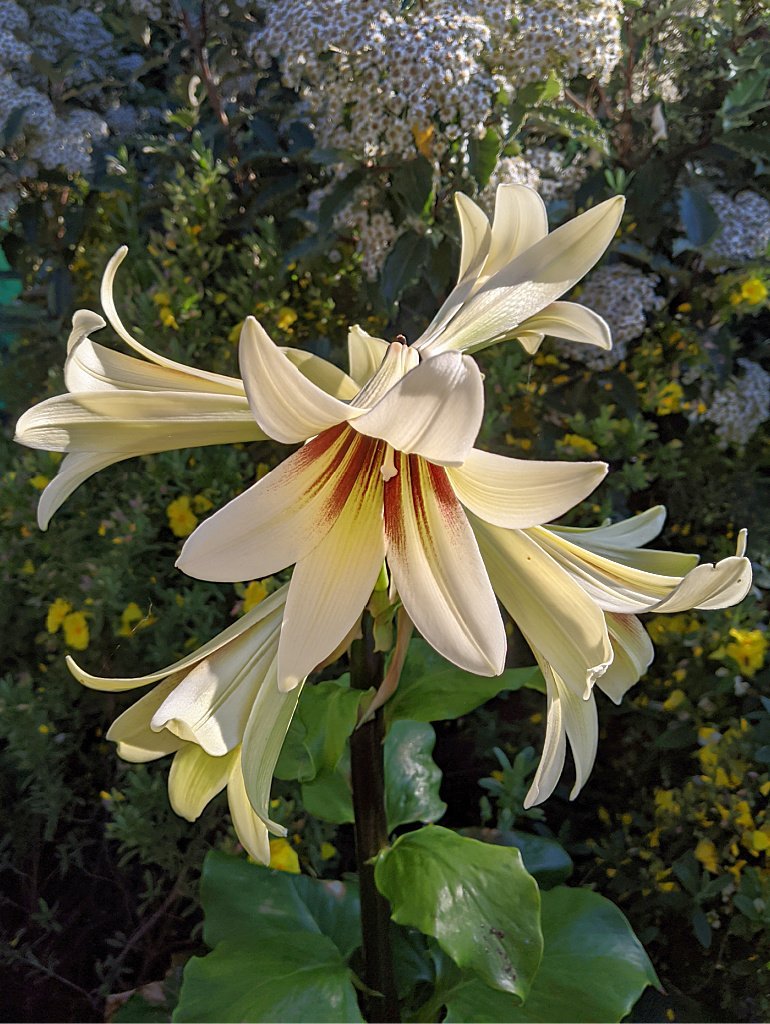
Yes, this was only its second season with us, a gift from mum-in-law, knocked out of its wee pot and put into deep shade at the back of a shrubby corner – and almost forgotten about.
It produced a substantial rosette of leaves in the first year, which the slugs said they quite liked as a change, but not as much as, say, Ligularia, yum. So that was OK, I suppose.
Truth to tell neither the slugs nor I were expecting this burgeoning growth. It soon became perfectly plain that this was to be the flowering year. The sturdy stem seemed to be noticeably taller with each succeeding day.
And then out came the exotic pale yellow trumpets with their reddish-brown markings on the throat. Even the neighbours came round to look. The plant dies after flowering, by the way. Or so the books say.
The Scottish Connections
Lt Col Edward Madden & Dr Hugh Falconer
And this out-of-the-ordinary flower has a couple of Scottish connections as well. For a start the first flowering in Scotland was in Edinburgh in 1852, from seed brought home from India by one Lt Col Edward Madden.
(This Irish-born military man and botanist collected extensively when he wasn’t polishing his artillery with the East India Company – I am telescoping a bit here…)
Anyway, he was an expert on the plants of the high passes of the Himalayas. He also retired to the very posh Regent Terrace in Edinburgh, presumably where the lily was first planted. I like to think that the neighbours came round to see his ever-growing giant lily as well.
(Who knows? He may even have invited over two of the uncles of Robert Louis Stevenson as these famous lighthouse builders lived in Royal Terrace, just across the park beyond his garden wall!)
Another curious connection is that some of Madden’s collecting expeditions were done in the company of a certain Dr Hugh Falconer. And he in turn has a Scottish connection by virtue of his birth in Forres in Moray.
You might be able to visit the Falconer Museum, which originated from funds from Dr Hugh and his brother.
One of Falconer’s tasks in India had been to assess the feasibility of growing tea there (as opposed to China). He was also a strict ‘creationist’ until Charles Darwin himself sent him a copy of his own ground-breaking ‘On the Origin of Species’.
Falconer thereafter cast aside his beliefs in the creation myth and thereafter earned a sound reputation in the fields of geology, botany and palaeontology.
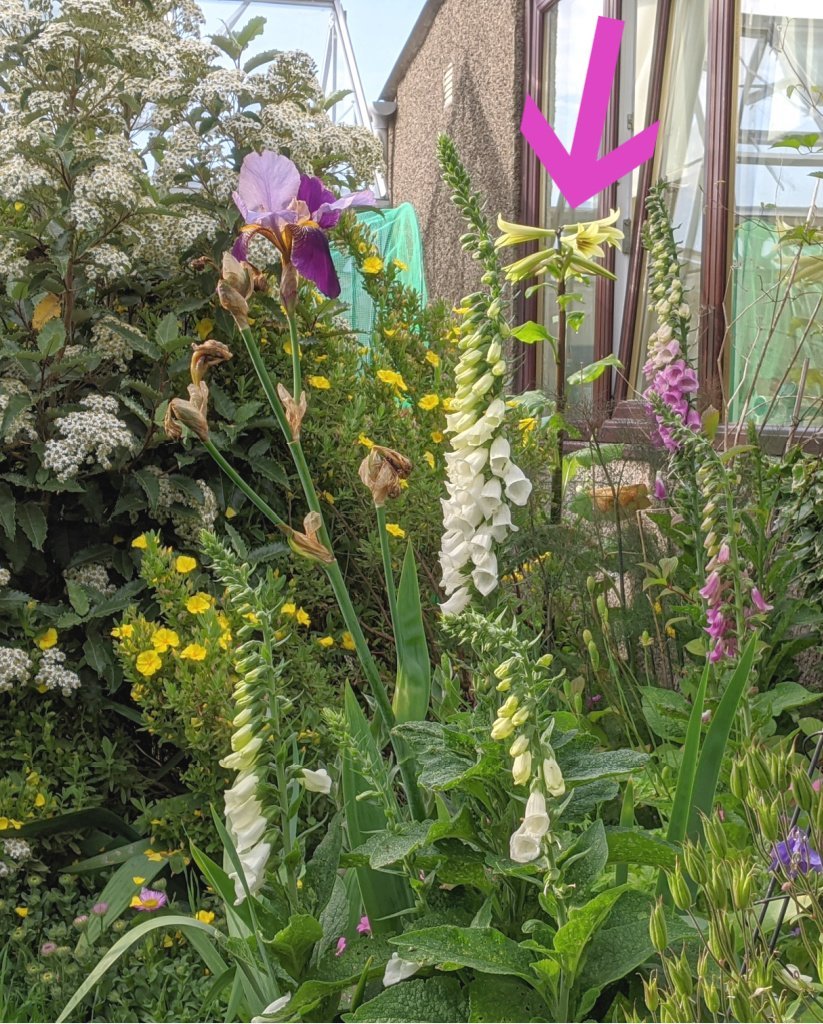
(Above) My fault. The foreground foxglove in this photo looks bigger than the background giant lily. Anyway, note how cardiocrinum is planted amongst other shrubs for shelter. That seemed to work.
Growing the Giant Lily Again
Anyway, as I write this, the giant lily seed-pods are ripening in the autumn sunshine. And I could start the whole process off again not just by planting seeds but by replanting the offshoots that, sure enough, are growing round the base of the ‘doomed’ parent plant.
The seeds take some years to reach flowering stage – by which time they could be anything up to 9ft (2.5 tall, approx.) The offshoots do not get quite as tall. Mine just flowered at about 6ft (.8m high). Just as well they stayed at that altitude in a well protected location. Up here I’d have to stake them very securely.
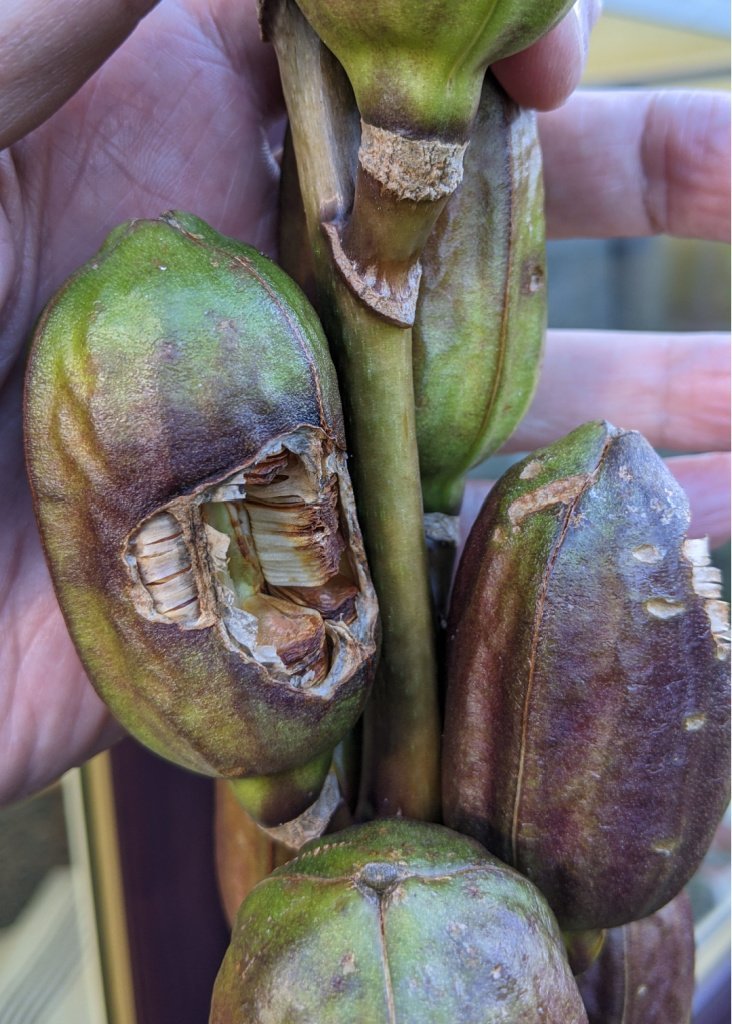
(Above) Something has been pecking through the seed-heads (or pods). The flat seeds of Cardiocrinum inside look like stacks of CDs! Seeds are worth a go and result in taller plants but you have to wait for some years.
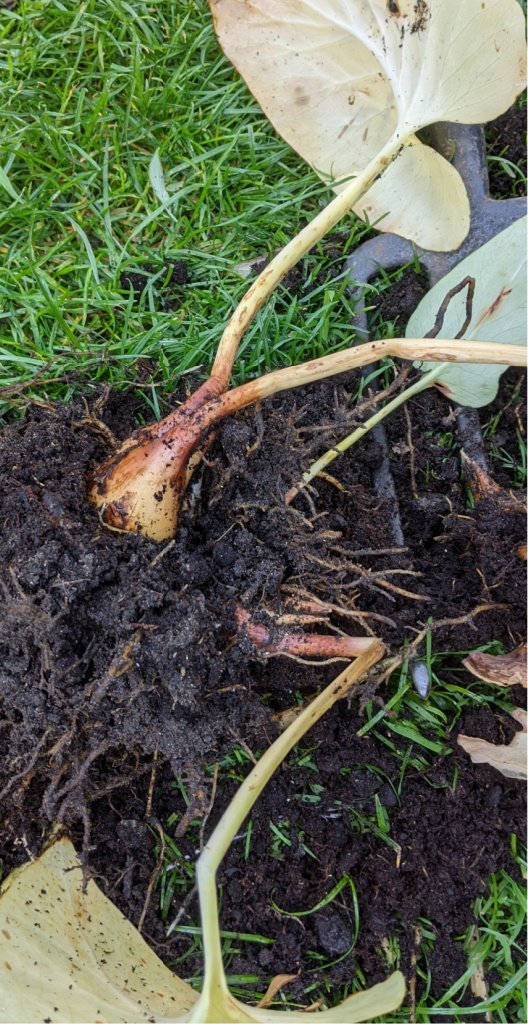
(Above) Be ruthless. Pull up the dead stalk then separate the bulbs. You could plant one back where the original came from. Otherwise pot ’em up till you have made up your mind what to do!
Luss & The Lily Connection
There are of course many other species in the lily tribe. Even the bonnie banks of Loch Lomond have a connection with lilies. At least, the village of Luss does.
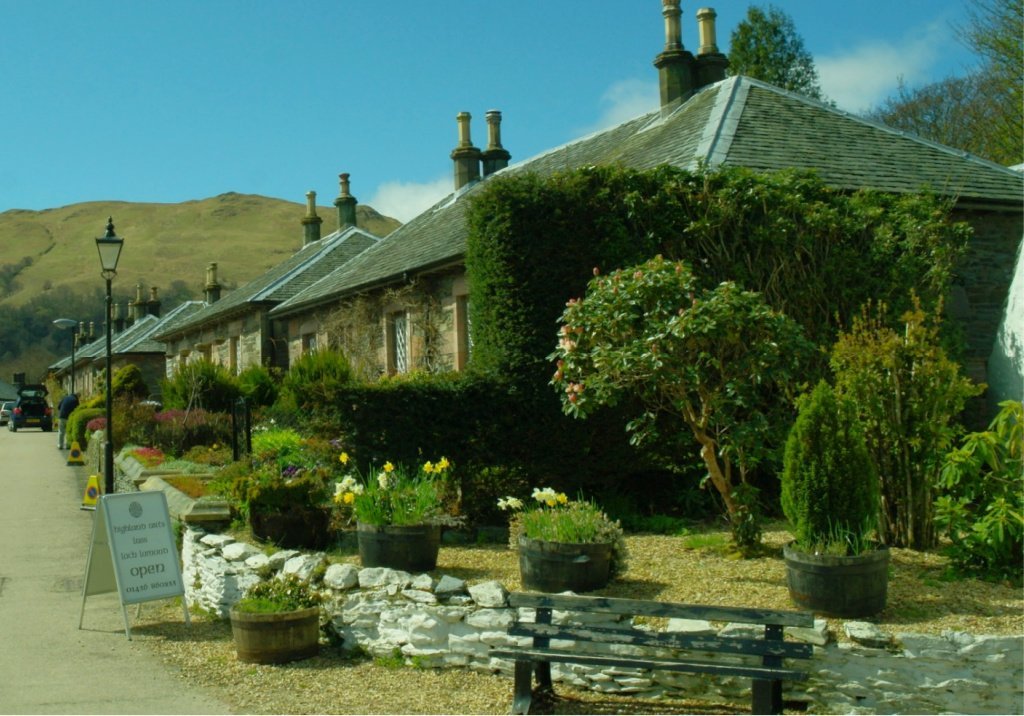
There is a local story there involving a certain wellborn Luss lassie of long ago, called Baroness M’Auslan. She married a French nobleman and lived in France with him. He fought at the siege of Tournai. Now…as Tournai has been besieged ten times in its history, that is one of my less helpful statements.
As this is about gardening rather than history, this entitles me to move swiftly back to the story. So-o…
Unhappily, his wife, the Baroness, then unexpectedly died and her body was taken back to Luss. In memory of her French connections, lilies, which the French call fleurs-de-lis, were strewn on her grave. New plants grew up from them and these were later effective in curing some kind of plague which afflicted the village.
The parish took on the name – so that fleurs-de-lis are really ‘flowers of Luss’. Apparently.
Now, I’m sure you’ll agree that it is a romantic story. It’s probably just a load of compost though. You’ll find it in print as well, in books written many years ago. I blame these over-imaginative Victorian guidebook writers again.
Luss – a popular tourist village with bonnie gardens.
However, Luss is a bonnie place in summer with plenty of colour in its gardens. (Even if it is a bit over-run with visitors for much of the year.)
I think the story is just a fiction. It seems much more likely that fleurs-de-lis are really fleurs-de-Louis because King Louis VII of France used the lily as an emblem.
Equally, there is another gardening connection with Luss. The name could really be a Gaelic word ‘lios’ meaning a garden – just like the island of Lismore means the big garden.
Anyway, Cardiocrinum giganteum is worth a go – if you have a sheltered spot – and widely available from stockists. You might like to read about roses now too.
